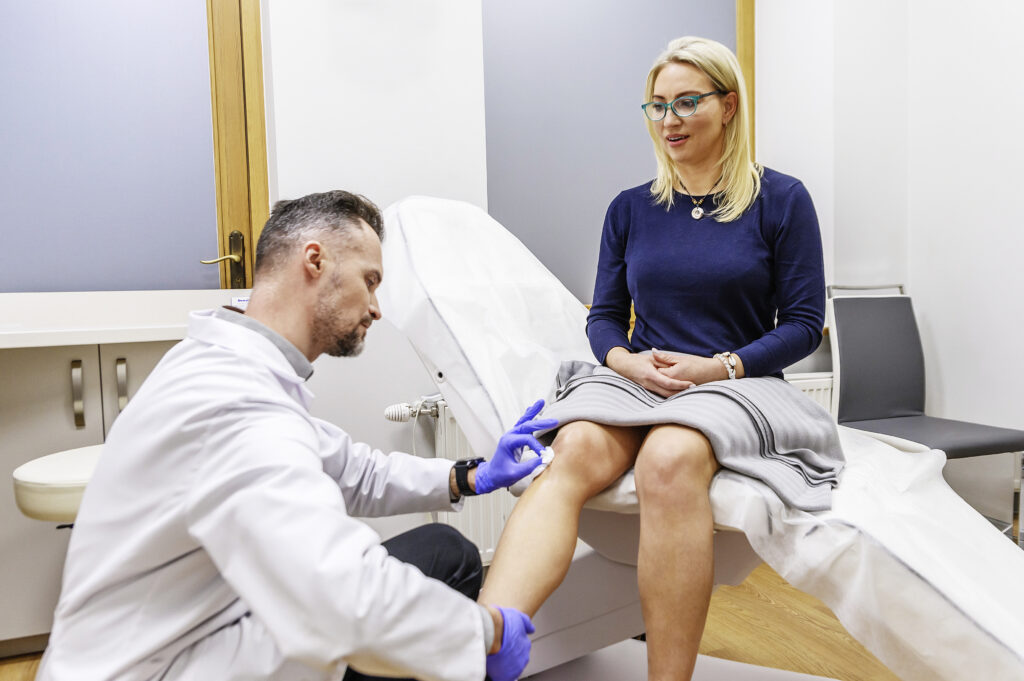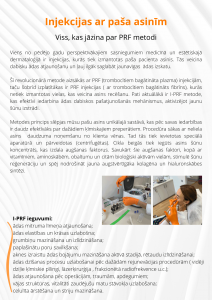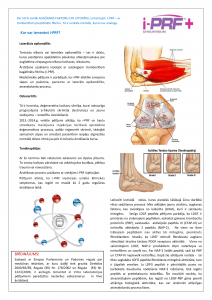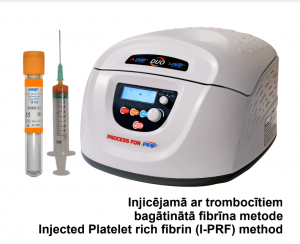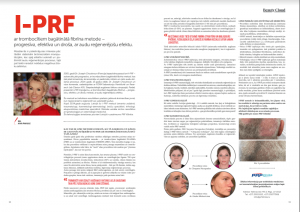
I-PRF in Traumatology

Using I-PRF in traumatology promotes the regeneration of cartilage and connective tissues and the healing of defects.
This is achieved through a concentrate of cells activated during the centrifugation process, which restores damaged tissues.
PRF therapy activates your body’s natural healing processes, helping to regenerate damaged tissues faster, reducing inflammation, and relieving pain.
It is especially effective therapy not only for joint inflammations (arthritis) but also for fractures, sprains, and other muscle and bone injuries.

Thanks to the release of growth factors, tissue vascularization is enhanced, along with the synthesis of elastin, collagen, and hyaluronic acid, resulting in a stable, long-term tissue regeneration process (bone and soft tissues) without side effects.
- Before the procedure, a small amount of blood (maximum 26 ml) is drawn from the patient into sterile vacutainers and centrifuged under specific conditions, resulting in the separation of blood components into fractions.
- The upper fraction, containing activated platelets, leukocytes, fibrin, and stem cells (from peripheral blood circulation), is used for injection or application.
- After injection or application, the activated platelets and leukocytes, embedded in a three-dimensional fibrin matrix, gradually release growth factors for up to 28 days.
Completing a full treatment course of 3 to 4 sessions (once a month, every 28 days) achieves long-term results.

This approach accelerates the healing process, reduces pain, and promotes faster recovery. Thanks to the release of growth factors, it enhances:
– tissue vascularization;
– synthesis of elastin, collagen, and hyaluronic acid.
I-PRF therapy is a simple, safe, and natural treatment option that utilizes your body’s own biological resources. PRF therapy helps avoid the use of chemical substances, providing effective and individually tailored treatment.
At PRF Clinic, we care about your health, ensuring the highest quality of treatment and comfort!
Medical research, as well as our accumulated experience in traumatology since 2014, has demonstrated that PRF injections effectively reduce pain, restore damaged tissues and function, and support the healing process with long-term results.




